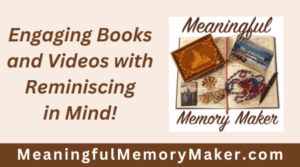Where Do I Go From Here? Reminiscing with The Next Generation
 Submitted by Lori K. Yauch
Submitted by Lori K. Yauch
M.A., CCC-SLP
Owner/Manager
Meaningful Memory Maker
“Tell me, where do I go from here? You said you’d take me through the years.”
(Songwriter: Parker McGee, 1976)
Shepherding our loved one(s) through the years is the implied contract between young children and parents and adult children and aging parents.
But what happens when adult children suffer caregiver burnout? To whom does continued caregiving fall? Some families look to the next generation – grandchildren and great-grandchildren, while others look to young professional caregivers. In either case, when it comes to communicating and engaging with their older generation care receivers, a younger generation that relies on texting, emojis, streaming movies, TV, and music may wonder what we can talk about.
What indeed!
Finding Common Ground
Finding common ground is crucial when seeking to bridge the generation gap. This shared territory can serve as a foundation for understanding and connection.
Let’s talk about what we share:
- Our family
- Our love of music
- Our love of books
- Our love of films.
 Reminiscing is a powerful tool for bridging the generation gap. It allows us to share memories, experiences, and stories. It’s not just about the past but about the connections and understanding it fosters in the present.
Reminiscing is a powerful tool for bridging the generation gap. It allows us to share memories, experiences, and stories. It’s not just about the past but about the connections and understanding it fosters in the present.
The Times of Your Life
When mining the family archives, choose photos representing milestone life events (earliest birthday, 18th birthday, graduations, marriages, children’s births, the arrival of grandchildren, and great-grandchildren). Keep the conversation person-centered. As they age, people with dementia see themselves as young. They relate to others based on a direct link to themselves.
As a speech-language pathologist specializing in dementia care, I have witnessed this phenomenon professionally and personally.
In assisted living and long-term care centers, I see shadowboxes on the wall and portraits of young people when walking by a resident’s apartment. They see themselves as young and have difficulty relating to their older selves. If presented with their mirror image, the person with dementia may treat it as a friend.
In my family, during a conversation with my aging uncle about “old times,” he mentioned his mother and his brother. The conversation suddenly stopped when I called them grandma and my dad.
Later, he got up and walked to his room, bringing back a picture saying, “This is my mother.” Then, I realized the links to his family had to relate directly to him in order for him to enjoy the interaction.
By redirecting the conversation and discussing the pictures with phrases like:
- your mother
- you
- your brother
- your wedding day,
a caregiver can meet a care receiver where they are. This approach fosters empathy and understanding, creating a more meaningful connection.
I’ll Meet You There
When you meet your care receiver where they are, you’re building a communication bridge. They can communicate about what they know, and what they know is who they were. During an Alzheimer’s Speaks chat with Lori La Bey, we discussed this point. She brought a broader perspective:
“We always say, ‘Step into their world, and that world is your world.’ But I think it also teaches us joy in a different fashion. We put (reminiscence) in a place where I’m doing it for them. But there are real gifts back to you. You can have some very joyful and meaningful moments, and those are the ones that will stick with you.”
As a younger generation caregiver, those moments may also give you a greater appreciation of family legacy.
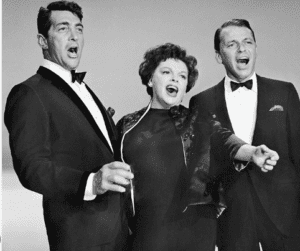
Sing A Song
When the photo albums and Family History books are closed for the day or are no longer an easy option as communication skills change, channel your inner Alicia Keyes, Ariana Grande, Sam Smith, and John Legend, and sing a song with Grandma!
While she may not be able to duet with you on “Girl on Fire!” or “All of Me,” she can introduce you to classic crooners like Frank Sinatra, Dean Martin, Johnny Mathis, Rosemary Clooney, and Judy Garland.
According to the literature, this introduction can serve as a means of expression (1), and singing favorite show tunes can improve brain function (2). So, grab your iPad, fire up YouTube, and search classics like “Fly Me to the Moon,” “That’s Amore,” “Sisters,” “The 12th of Never,” or anything from The Great American Songbook, and “Get Happy” together.
Saturday Night at the Movies
Once a generational connection has been made, either through tunes from The Great American Songbook or a favorite Broadway show, a classic movie musical is the next logical rung on the ladder to intergenerational communication. Movie musicals contain bright colors and easy-to-follow plots (boy meets girl); they are a natural extension of the sing-along. They also contain exciting lessons in social behavior, history, family relationships, and self-discovery for the younger generation.
Choosing The Films – Keep It Simple and Person-Centered
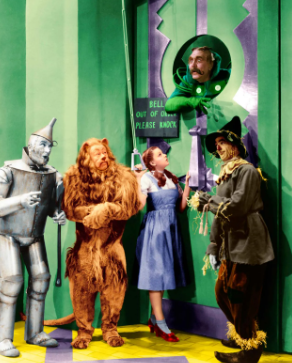 Consider some timeless favorites when choosing a musical film that generations can enjoy together. They are likely Grandma’s favorites, too! The films should reflect her life and formative years, from youth to young adult and transitioning to a marriage-minded woman. Consider:
Consider some timeless favorites when choosing a musical film that generations can enjoy together. They are likely Grandma’s favorites, too! The films should reflect her life and formative years, from youth to young adult and transitioning to a marriage-minded woman. Consider:
- The Wizard of Oz
- Meet Me in St. Louis
- West Side Story
- Good News
- Fiddler on The Roof
- Dirty Dancing
In these films, Grandma may see herself as Dorothy – a girl growing up simply with her family but yearning for adventure. Some beautiful stories may emerge regarding her hopes and dreams for the future. In the remaining films, she may see herself as a young girl, looking for and finding her first love with her high school or college sweetheart. (West Side Story, Meet Me in St Louis, Good News) Ask questions about best friends, school dances, football games, and summer vacations.
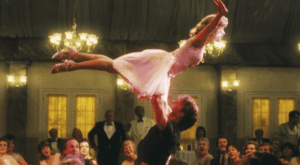 Younger generation viewers may see more of themselves in Baby and Johnny. (Dirty Dancing) Baby’s growing pains and angst regarding her love for Johnny and fear of what that may mean for her immediate future. Johnny’s anger and self-doubt are apparent as he struggles to find his place in the world.
Younger generation viewers may see more of themselves in Baby and Johnny. (Dirty Dancing) Baby’s growing pains and angst regarding her love for Johnny and fear of what that may mean for her immediate future. Johnny’s anger and self-doubt are apparent as he struggles to find his place in the world.
However, characters like Dorothy, the sisters in Meet Me in St Louis and Fiddler on the Roof, and the love-struck Maria and Tony in West Side Story can be mirrors for the younger generation. They can provide insight into the desire for adventure, the camaraderie of sisterhood, the need to control your own life and happiness, and the glow of first love and courtship.
Goin’ Courtin’
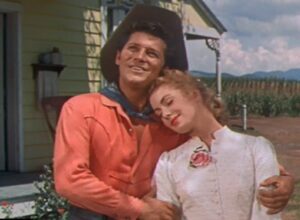 During these screenings and conversations, take note of dating etiquette. Since the emergence of the cellphone, the next generation sees dating in the 21st century as texting, Facetime, and the sharing of emojis. Some beautiful examples of traditional courtship are highlighted in:
During these screenings and conversations, take note of dating etiquette. Since the emergence of the cellphone, the next generation sees dating in the 21st century as texting, Facetime, and the sharing of emojis. Some beautiful examples of traditional courtship are highlighted in:
- Seven Brides for Seven Brothers
- Oklahoma!
- Hello, Dolly!
They include a tip of the hat, an offer of your arm, calling her sweet names (“my darlin’ my dear”), taking her for a carriage ride), or a little friendly manipulation on her part. (“Horace Vandergelder, you go your way, and I’ll go mine.”) But no courtship is complete without a dance. As Gene Kelly said, “You dance love, you dance joy, and you dance dreams.” An American in Paris, Singin’ in the Rain, On the Town, Holiday Inn, and Dirty Dancing are prime examples of dancing for love.
The older generation can share courtship stories involving first dates, meeting a spouse, and knowing you’ve found “the one.” They may also share memories of their parents’ reactions to that decision. Fiddler on the Roof and Dirty Dancing are excellent examples of parents’ reactions to their independent daughters’ decisions.
Coming of Age
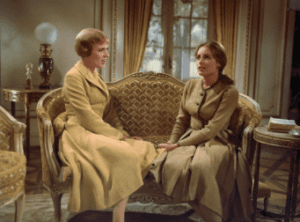 As courtship segues into adulthood, the topic of coming of age during turbulent times may arise. Sound of Music illustrates the effect that major life events such as wars can have on those who serve and those who are left behind. Implore grandparents to:
As courtship segues into adulthood, the topic of coming of age during turbulent times may arise. Sound of Music illustrates the effect that major life events such as wars can have on those who serve and those who are left behind. Implore grandparents to:
- Tell me about it.
- How old were you?
- How long was the family separated?
- What changes did you see at home?
In this film, changes at home encompass not only those caused by war but also those that are inevitable when a stepparent enters the family. This situation is mirrored in many second—and third-generation families.
These questions, answers, and observations can open the door to heartfelt discussions between generations about turning points in one’s life and how love, loyalty, and family shepherd one through those changes.
Shepherding Us Through Change
As family dynamics change and increasingly extended families assist in the care of their aging relatives, the dementia journey touches everyone.
As you and all the generations of your family shepherd your loved one on this journey, if the thought of “Where do I go from here?” rears its head, may I suggest a walk down Reminiscence Avenue? It is a place where all memories are shared, and joy and connection abound!
 Submitted by Lori K. Yauch, M.A., CCC-SLP
Submitted by Lori K. Yauch, M.A., CCC-SLP
Owner/Manager
Meaningful Memory Maker

